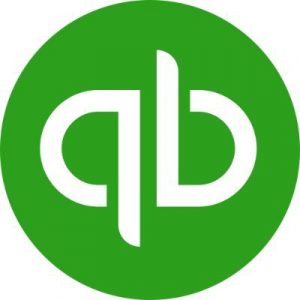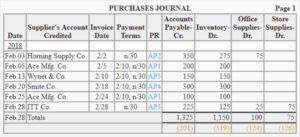09 Jan How Long Does It Take for a Savings Bond to Reach Its Face Value?

If you are buying treasury bonds, you do not need to go through a bond broker. You can complete the trade through Treasury Direct without incurring the cost of a markup. However, you should purchase corporate bonds and municipal bonds through intermediaries, but these cannot be bought directly from issuers. Now, regardless of whether the bond sells at a discount or a premium, the issuer will repay the bond face value upon bond maturity. So, if you purchase a bond at $950, and another on investor purchases the same bonds for $1,020, at maturity, you will both receive $1,000. If the interest rates were to dip to 3%, the bond’s market value would increase, and the bond would trade at face value.
The main advantage of Treasuries is that they are exempt from local and state taxes. Also, the Treasuries have the full backing of the federal government, which means there is little risk the company will default. Face value, also known as the par value, is equal to the dollar amount the issuer pays to the investor at maturity. The price of a bond can fluctuate in the market by changes in interest rates while the face value remains fixed. Historically, face value was used to ensure that companies didn’t sell stocks below a specified price.
Within this time frame, there are short-term bonds (1-3 years), medium-term bonds (4-10 years) and long-term bonds (10 years or more). At this point, the full face value of the bond is paid to investors. The face value of bonds usually represents the principal or redemption value.
Par value, or face value, is a “static value” assigned when a company brings stock or a bond to market. You’ll find the par value printed on the stock or bond certificate. As you get started, familiarize yourself with all bond basics, including bond face value which doesn’t change over time.
When interest rates across the market go up, there become more investment options to earn higher rates of interest. A bond that issues 3% coupon payments may now be “outdated” if interest rates have increased to 5%. To compensate for this, the bond will be sold at a discount in secondary market. Although the coupon rate will remain 3%, the lower price of the bond means the investor will earn a higher yield.
For example, if the issuer needs to have a factory-built that has a cost of $2 million, it may price shares at $1,000 and issue 2,000 of them to raise the needed funds. The value of the stocks increases as the issuer begins to turn quarterly profits and sees returns on the investments generated by investors purchasing the stocks. Time to maturity also usually influences bond prices; however, the exact effect depends on the shape of the yield curve. A normal yield curve features lower interest rates for short-term bonds and higher interest rates for long-term bonds. Face value refers to the dollar value of a financial instrument when it is issued.
What Is the Difference Between a Bond’s Coupon and Yield?
Series EE and Series I are intended to be savings bonds, and Series HH is intended to be an investment bond. That being said, for those looking to move up the investment chain and purchase preferred stock, this is important information to know when selling shares or stock shares on the open market. Most AAA bonds—high quality corporate bonds—come in denominations of $1,000. Other bonds such as Treasuries and municipal bonds come in increments ranging from $100 to $10,000.
Check or calculate the value of a savings bond online – Yahoo Finance
Check or calculate the value of a savings bond online.
Posted: Mon, 31 Jul 2023 17:10:15 GMT [source]
For example, if interest rates are higher than the bond’s coupon rate, then the bond is sold at a discount (below par). In the previous example, a bond with a $1,000 face value, five years to maturity, and $100 annual coupon payments is worth $927.90 to match a new YTM of 12%. The five coupon payments plus sales journal the $1,000 maturity value are the bond’s six cash flows. If interest rates fall, the bond’s price would rise because its coupon payment is more attractive. The further rates fall, the higher the bond’s price will rise. In either scenario, the coupon rate no longer has any meaning for a new investor.
Bond Equivalent Yield (BEY)
Bonds can provide a means of preserving capital and earning a predictable return. Bond investments provide steady streams of income from interest payments prior to maturity. Keep in mind that the par value of the bond generally remains static—interest rates are the dynamic variable.
- The face value of a bond is the starting point for gauging whether or not it’s a good investment for you.
- Note that Treasury bills, which mature in a year or less, are quoted differently from bonds, hence the wide difference in price.
- You should analyze the investment further to determine why the price has changed and forecast how that may change between today and when it matures.
- If you get a coupon bond at 4% and an interest rate of 4%, the bond will trade at face value since the coupon rate and interest rate are equal.
- The market value of stocks and bonds is determined by the buying and selling of securities on the open market.
- Typically, it is distributed annually or semi-annually depending on the bond.
The rating takes into consideration a bond issuer’s financial strength or its ability to pay a bond’s principal and interest in a timely fashion. Investors earn interest on a bond throughout the life of the asset and receive the face value of the bond upon maturity. Investors can purchase bonds for more than their face value at a premium or less than the face value at a discount. Whichever they buy will change the yield they earn on the bond.
What is a bond?
To live the life you want to lead in retirement, start early, set goals and create an investing plan that will help you achieve those goals. Never stop learning when it comes to protecting your hard-earned money and investing for your future. 76.4% of retail investor accounts lose money when trading CFDs with this provider. Usually offered by Banks and Building Societies, Saving Bonds will last for a fixed term and earn interest.
- Yes, par value and face value are the same and both refer to the amount received by the investor at maturity, not the value at the time of its issue since bonds can be issued at a discount.
- Be wary of any person who attempts to sell non-registered bonds.
- This means that the moment you purchase bonds, you’ll have a hard time selling them at face value.
- They are a common investment security issued by government organizations or businesses in an effort to drive capital for an upcoming project or initiative.
Bonds with higher ratings are saver to invest in, but they have lower interest rates than those with lower ratings (it all boils down to the risk involved). From here, numbers and some symbols feature to give more specific ratings. Standard & Poor’s and Fitch use minus and plus signs to provide a hierarchy of creditworthiness.
What Is the Difference Between Face Value and a Bond’s Price?
This will ensure that you’re not overpaying for that higher interest rate. The current yield formula is the annual coupon payment divided by the current market price. A bond is a debt security that pays a fixed amount of interest until maturity.
With this bond price calculator, we aim to help you calculate the bond price issued by a government or a corporation. Finding out the current bond price is one of the most critical procedures for bond investors, as miscalculating can lead to huge losses. Calculating the value of a coupon bond factors in the annual or semi-annual coupon payment and the par value of the bond. Since bonds are an essential part of the capital markets, investors and analysts seek to understand how the different features of a bond interact in order to determine its intrinsic value.
Bond Face Value – What it is and How it Works
This information is available free of charge online at If the municipal bond is not filed with MSRB, this could be a red flag. Inflation reduces purchasing power, which is a risk for investors receiving a fixed rate of interest. The interest from municipal bonds generally is exempt from federal income tax and also may be exempt from state and local taxes for residents in the states where the bond is issued.
Bond Basics: The Relationship Between Yield and Price – Nasdaq
Bond Basics: The Relationship Between Yield and Price.
Posted: Mon, 31 Jul 2023 22:12:00 GMT [source]
If you sell them before maturity, you might get a bid request for $110. In which case the best option is to hold the bonds until maturity. Now that you understand what bond face value is, let’s get into the types of bonds. The face value of a life insurance policy is the death benefit. In the case of so-called “double indemnity” life insurance policies, the beneficiary receives double the face value in case of accidental death. If an investor knows that the semi-annual YTM was 5.979%, they could use the previous formula to find the EAY of 12.32%.
Understanding Face Value
The fractional periods can be defined but the accrued interest is more difficult to calculate. Treasury bonds, the yield calculation used is a yield to maturity. In other words, the exact maturity date is known and the yield can be calculated with near certainty. Similarly, when interest rates decrease, and the YTM decrease, the bond price will increase. We have written this article to help you understand what a bond price is and how to price a bond using the bond price formula.

If enough investors believe interest rates are going to fall, an inverted yield curve can occur. Conversely, if interest rates are lower than the bond’s coupon rate, the bond is sold at a premium (above par). While the face value of a bond provides for a guaranteed return, the face value of a stock is generally a poor indicator of actual worth. In simple terms, a bond is a loan between an investor and an issuer. They are a common investment security issued by government organizations or businesses in an effort to drive capital for an upcoming project or initiative. A bond rating is a grade given to a bond and indicates its credit quality.


Sorry, the comment form is closed at this time.